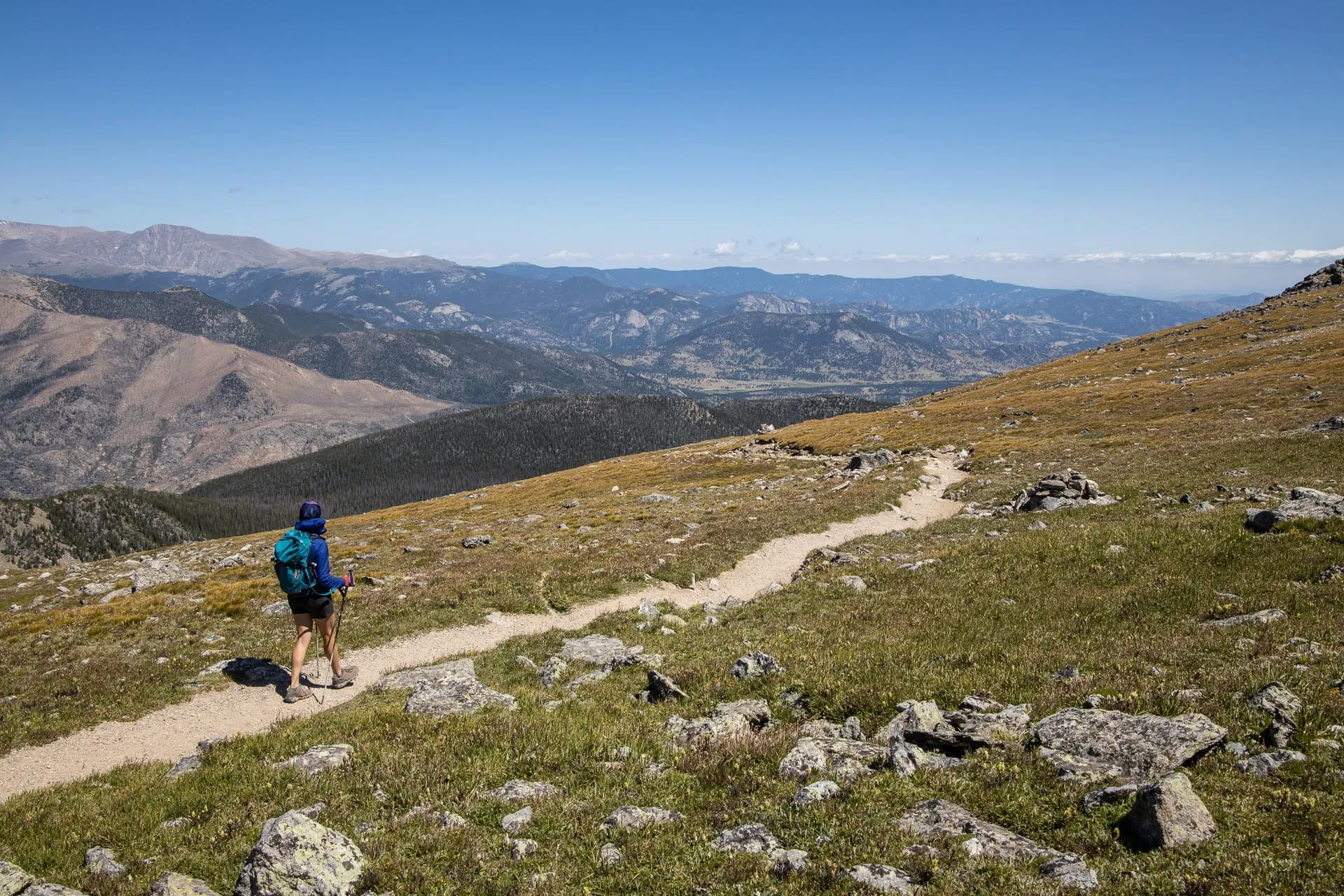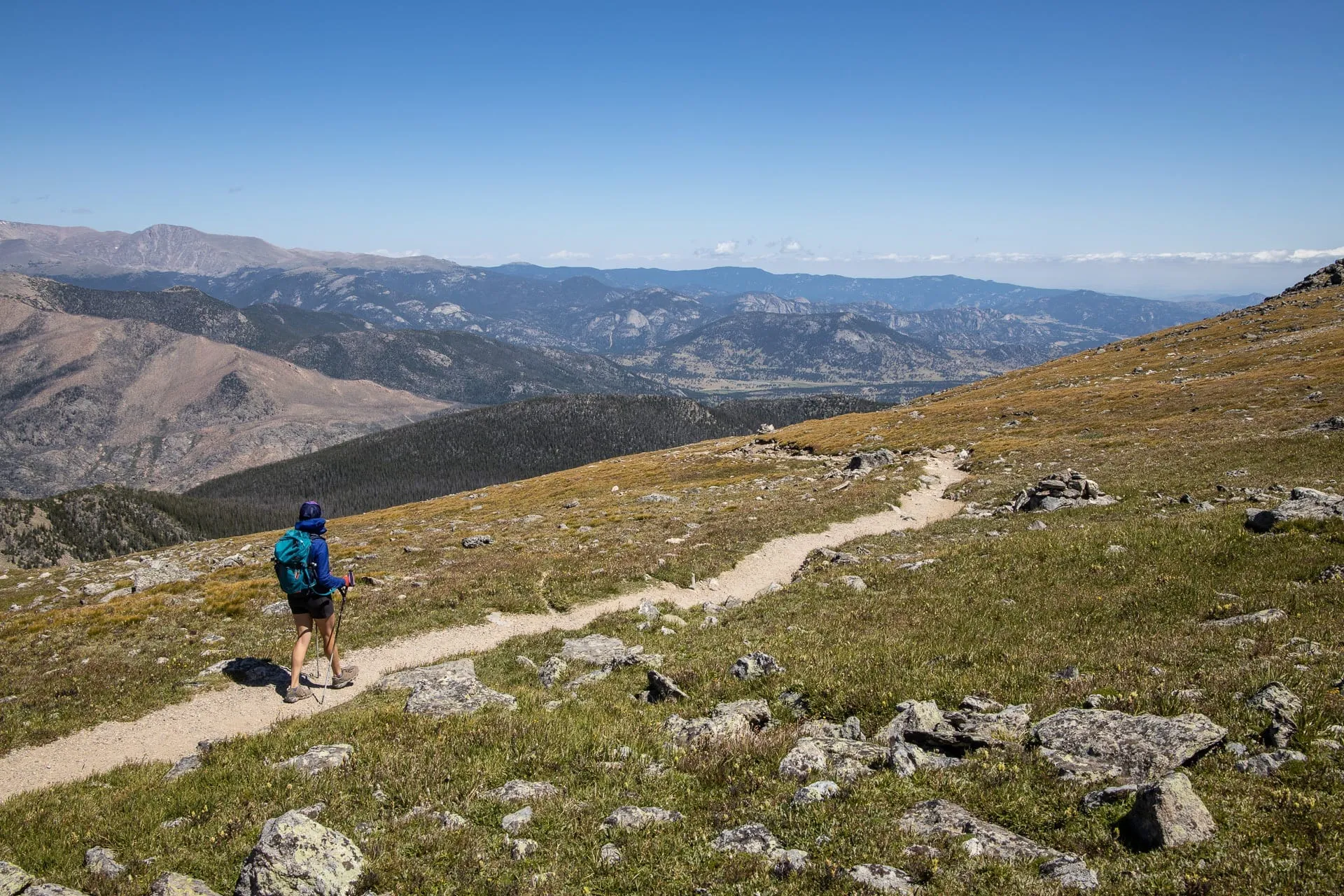Master the art of solo hiking with expert safety tips, gear recommendations, and confidence-building strategies
I've been solo hiking for beginners across national parks for over eight years, and I can tell you that taking your first solo hike doesn't have to be intimidating. In this comprehensive guide, I'll share everything I've learned about starting your solo hiking journey safely, from essential gear and planning strategies to building unshakeable confidence on the trail. Whether you're a complete beginner or looking to transition from group hiking, this guide will give you the knowledge and tools needed for successful solo outdoor adventures.
Why Solo Hiking for Beginners is Worth the Challenge

When I first started considering solo hiking for beginners, I questioned whether it was worth the perceived risks and challenges. After years of solo adventures across diverse terrains, I can confidently say that solo hiking offers transformative benefits that group hiking simply cannot match. The freedom to set your own pace, the deep connection with nature, and the profound sense of self-reliance you develop are unparalleled.
Unlike traditional hiking or trekking, solo hiking forces you to be completely self-sufficient. This responsibility, while initially daunting, builds incredible confidence and decision-making skills that extend far beyond the trail. I've witnessed countless beginners discover strengths they never knew they possessed during their first solo hiking experiences.
The mental health benefits of solo hiking are particularly remarkable for beginners. The solitude allows for genuine introspection and stress relief that's impossible to achieve when managing group dynamics. I've found that my most creative insights and problem-solving breakthroughs happen during solo hikes, when my mind is free from external distractions and social obligations.
From a practical standpoint, solo hiking for beginners offers unmatched scheduling flexibility. You're not dependent on others' availability, skill levels, or preferences. Want to start at sunrise to avoid crowds? Take extended photo breaks? Change your route mid-hike? When you're hiking solo, every decision is yours alone, creating a deeply personal and customizable outdoor experience.
Personal Experience: My first solo hike was a 6-mile loop in the Cascade Mountains. What started as nervousness transformed into pure exhilaration as I realized I was fully capable of navigating, making decisions, and enjoying nature entirely on my own terms. That hike changed my relationship with both the outdoors and myself.
Essential Safety Fundamentals for Solo Hiking Beginners
Pre-Hike Safety Planning
Safety in solo hiking for beginners starts long before you step foot on the trail. The most critical safety measure is creating a detailed itinerary and sharing it with a trusted contact. I always provide my emergency contact with specific trail names, expected start and return times, parking location details, and my vehicle description. This information becomes crucial if search and rescue teams need to locate you.
Understanding trail difficulty ratings is essential for beginners choosing appropriate solo hikes. I recommend starting with trails rated "easy" or "beginner-friendly" that are well-marked and heavily trafficked. These trails provide built-in safety nets through regular foot traffic and clear navigation markers.
Emergency Preparedness Essentials
Every solo hiking beginner must carry emergency communication devices. I never venture into areas with limited cell coverage without my satellite communicator. Modern devices allow two-way messaging and GPS tracking, providing peace of mind for both you and your emergency contacts. Additionally, learning basic hiking trail terminology helps you communicate location information clearly in emergency situations.
First Aid Must-Haves
- Adhesive bandages and gauze
- Pain relievers and anti-inflammatories
- Antiseptic wipes and antibiotic ointment
- Emergency whistle
- Space blanket
Communication Backup
- Fully charged cell phone
- Portable power bank
- Emergency contact information
- Written trail map backup
- Personal locator beacon (PLB)
Situational Awareness on the Trail
Developing heightened situational awareness is crucial for solo hiking beginners. I always hike without headphones or with only one earbud at low volume, ensuring I can hear approaching hikers, wildlife, or changing weather conditions. Learning to read and interpret trail signs accurately prevents wrong turns and keeps you on safe, maintained paths.
Weather awareness becomes exponentially more important when hiking solo. I check detailed forecasts, understand local weather patterns, and always pack layers for temperature fluctuations. Mountain weather can change rapidly, and being caught unprepared without group support can quickly become dangerous for beginners.
Building Your Solo Hiking Confidence Step-by-Step

Starting Small: Your First Solo Steps
Building confidence in solo hiking for beginners requires a progressive approach that I've refined through years of guiding newcomers. Start with familiar trails close to home—ideally ones you've hiked with others previously. This familiarity allows you to focus on developing solo hiking skills without navigation stress or unknown terrain challenges.
I recommend beginning with 2-3 mile loops on well-maintained trails with good cell reception. These starter hikes should take 2-3 hours maximum, providing enough time to practice solo decision-making while maintaining easy exit options. Popular local parks and nature preserves often offer perfect beginner-friendly environments with regular foot traffic and clear trail markings.
Progressive Skill Development
Each solo hike should build upon previous experiences while introducing new challenges gradually. After mastering local trails, progress to slightly longer distances or moderate elevation gains. I typically recommend increasing either distance or difficulty—never both simultaneously—to maintain manageable challenge levels for beginners.
Practice essential skills during each outing: navigation with map and compass, emergency whistle signals, basic first aid scenarios, and weather assessment. I carry practice scenarios in my head during solo hikes, mentally rehearsing responses to various situations. This mental preparation builds automatic responses that serve you well in actual emergencies.
Confidence-Building Exercise
Create a "solo hiking journal" documenting each adventure. Record what went well, challenges faced, and lessons learned. This practice reinforces positive experiences and helps identify areas for improvement. I review my journals before attempting new or challenging trails, reminding myself of previous successes and capabilities.
Learning from Others While Hiking Solo
Solo hiking doesn't mean avoiding all human interaction. I've learned tremendously from brief conversations with experienced hikers encountered on trails. These interactions provide valuable local knowledge, weather updates, and trail condition information that enhances safety and enjoyment for solo hiking beginners.
Join online communities and local hiking groups to connect with experienced solo hikers willing to share advice. Many offer mentorship opportunities or organized "solo together" hikes where individuals hike independently but within the same general area, providing safety benefits while maintaining solo experiences.
Gear Essentials Every Solo Hiking Beginner Needs
Safety and Protection Gear
Personal protection takes on heightened importance for solo hiking for beginners. I always carry bear spray in bear country and know how to use it effectively. The psychological confidence that comes from being prepared for wildlife encounters cannot be overstated—it allows you to enjoy nature without constant anxiety about potential dangers.
Recommended Safety Products
SABRE Frontiersman Bear Spray
Maximum strength bear deterrent with 30-foot range. Essential for solo hikers in bear country with easy-to-use safety mechanism.
Check Current Price on AmazonFoxelli Lightweight Trekking Poles
Collapsible aluminum poles with cork grips. Perfect for stability, balance, and self-defense if needed. Reduces knee strain on descents.
Check Current Price on AmazonFootwear and Clothing Systems
Proper footwear forms the foundation of safe solo hiking. I've learned through painful experience that cheap hiking boots lead to blisters, twisted ankles, and miserable experiences. Invest in quality hiking boots or trail runners that fit properly and provide adequate ankle support for your chosen terrain.
Layering systems become crucial when you're responsible for your own comfort and safety. I always pack base layers for moisture management, insulating layers for warmth, and weather protection layers for unexpected conditions. The ability to adapt to changing weather independently is essential for successful solo hiking beginners.
Essential Footwear Picks
Columbia Newton Ridge Plus Waterproof Boots
Lightweight, waterproof hiking boots perfect for beginners. Excellent ankle support with comfortable cushioning for all-day wear.
Check Current Price on AmazonNORTIV 8 Lightweight Hiking Shoes
Quick-lace hiking shoes ideal for day hikes. Breathable construction with excellent traction on various terrain types.
Check Current Price on AmazonNavigation and Communication
Modern GPS devices and smartphone apps provide excellent navigation support for solo hiking beginners, but I always carry backup paper maps and a compass. Technology fails, batteries die, and signal reception disappears—analog backups ensure you can always find your way home safely.
Invest in a quality satellite communicator if you regularly hike in areas with limited cell coverage. These devices provide two-way messaging capabilities and emergency SOS functions that can literally save your life when hiking solo. The peace of mind they provide allows you to venture further and enjoy nature more fully.
Planning Your First Solo Hiking Adventure
Timing and Seasonal Considerations
Successful solo hiking for beginners requires careful timing considerations that extend beyond simply checking the weather. I always research seasonal trail conditions, wildfire restrictions, hunting seasons, and park closure schedules before planning any solo adventure. These factors significantly impact safety and trail accessibility throughout the year.
Early morning starts provide multiple advantages for solo hikers: cooler temperatures, fewer crowds, better wildlife viewing opportunities, and easier parking at popular trailheads. I typically begin hiking at sunrise, which also ensures I complete most of my hike during optimal daylight hours with plenty of time for unexpected delays or route changes.
Route Research and Backup Plans
Thorough route research becomes exponentially more important when hiking solo. I study topographic maps, read recent trip reports, check trail condition updates, and identify potential bailout points along my planned route. This research helps me make informed decisions about gear requirements, expected hiking times, and alternative options if conditions deteriorate.
Always develop backup plans for various scenarios: unexpected weather changes, trail closures, equipment failures, or personal energy levels falling short of expectations. I typically identify 2-3 shorter alternative routes that can be accessed from the same trailhead, providing flexibility without requiring complete replanning or different gear sets.
Essential Planning Checklist
- Detailed trail research and condition reports
- Weather forecast and seasonal considerations
- Emergency contact notification and check-in schedule
- Gear inspection and preparation
- Route planning with identified bailout points
- Transportation and parking logistics
- Permit requirements and regulations review
Communication Protocols
Establishing clear communication protocols with your emergency contact is crucial for safe solo hiking. I provide detailed itineraries including specific trail names, planned start and return times, vehicle descriptions and parking locations, and backup contact information. We also establish check-in schedules and clear escalation procedures if I fail to make contact as planned.
Technology can enhance communication safety, but don't rely on it exclusively. I carry written copies of emergency contact information, local ranger station numbers, and medical information in waterproof containers. This backup ensures critical information remains accessible even if electronic devices fail or are damaged during the hike.
Trail Selection Guide for Solo Hiking Beginners

Identifying Beginner-Friendly Solo Trails
Selecting appropriate trails forms the foundation of successful solo hiking for beginners. I prioritize well-maintained, clearly marked trails with moderate foot traffic—enough people for safety without overcrowding. National and state parks typically offer excellent beginner options with established trail systems, regular maintenance, and ranger presence for additional security.
Loop trails provide ideal starting points for solo hiking beginners because they eliminate backtracking and offer varied scenery throughout the hike. I also look for trails with multiple access points or bailout options, allowing flexibility to shorten the hike if needed without being forced to complete the entire planned route.
Understanding Terrain and Difficulty
Terrain evaluation goes beyond simple distance measurements when selecting solo hiking trails. I consider elevation gain, trail surface conditions, exposure levels, and technical difficulty requirements. Beginner solo hikers should start with well-established dirt paths, avoiding technical rock scrambles, exposed ridge walks, or trails requiring special equipment or advanced navigation skills.
Water availability becomes a critical factor for solo hiking beginners, especially in arid environments. I research reliable water sources along the trail and plan accordingly, but I never depend solely on natural water sources without proper purification capabilities. Dehydration occurs quickly when hiking alone, as you may push harder without group feedback about rest and hydration needs.
Beginner Trails
2-4 miles, minimal elevation, clear markings, moderate foot traffic
Intermediate Trails
4-8 miles, moderate elevation, some technical sections, variable traffic
Advanced Trails
8+ miles, significant elevation, technical challenges, minimal traffic
Local Resources and Trail Information
Leveraging local resources significantly enhances trail selection success for solo hiking beginners. I regularly consult park ranger stations, local hiking clubs, outdoor gear shops, and online communities for current trail recommendations and condition updates. These sources provide invaluable insights about seasonal changes, recent maintenance activities, and potential hazards that standard guidebooks may miss.
Digital trail databases and mobile apps offer convenient access to detailed trail information, elevation profiles, recent user reviews, and GPS tracks. However, I always cross-reference digital information with official sources and recent firsthand reports, as conditions can change rapidly and app information may be outdated or inaccurate.
Consider joining beginner-friendly hiking groups initially to scout potential solo trails safely. Many areas offer "social distancing" group hikes where participants maintain individual spacing while benefiting from group safety. These experiences help you evaluate trail difficulty and develop confidence before attempting the same routes solo.
Local Insight: I've discovered my best solo hiking trails through conversations with park rangers and outdoor gear shop employees. These local experts understand current conditions, seasonal variations, and beginner-appropriate options that online resources simply cannot match. Don't hesitate to ask for specific recommendations based on your skill level and comfort zone.
Conclusion
Embarking on your solo hiking for beginners journey represents one of the most rewarding outdoor adventures you can undertake. Through careful preparation, appropriate gear selection, progressive skill building, and thoughtful trail choices, solo hiking transforms from an intimidating prospect into an empowering and deeply satisfying experience that connects you with both nature and your own capabilities.
Remember that every experienced solo hiker started exactly where you are now—with questions, concerns, and excitement about exploring the outdoors independently. The confidence and skills you develop through solo hiking for beginners will serve you throughout your outdoor adventures, creating a foundation for increasingly ambitious and rewarding experiences in nature.
Start small, stay safe, and trust in your ability to learn and grow with each solo hiking experience. The trails are waiting, and you're more prepared than you realize to answer their call. Your first solo hike might just be the beginning of a lifelong passion that reshapes how you see both the natural world and yourself.
Ready to Start Your Solo Hiking Journey?
Take the first step toward outdoor independence and discover the transformative power of solo hiking. Your adventure begins with a single footstep on the trail.
Explore More Hiking Guides

